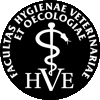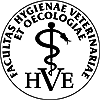Permanent preparations
TASK 1: Blood smear
Drop the anticoagulant-treated blood onto the slide glass. Use a skewed glass at an angle of 45° C - to smear the blood drop on the slide glass by pulling the drop behind the skewed glass. Otherwise you will damage and change the shape of the erythrocytes (they are extremely fragile). Please avoid these mistakes: small or too large drop of blood, oily slide glass, unequal smear, accumulation of blood at the end of smear.
TASK 2: Blood smear and "Panoptic" staining after Pappenheim (May-Grünwald, Giemsa-Romanowski)
Prepare the blood smear. Apply the May-Grünwald (5 min.); add distilled water (5 min.) and pour off dye. Apply the Giemsa-Romanowski (10 min.), pour off dye and rinse it with distilled water. Dry it by the careful by using a filtration paper. Observe the red blood cells in the thin layer, measure the diameter of a mammal erythrocyte. Compare the mammal blood smear with a permanent preparation of a bird blood smear. Measure the size of bird erythrocyte.

Fig.: Procedure: A – put drop of blood on the slide, B – attach a glass to the drop at an angle of 45° C, C – make blood smear. Comparison of erythrocytes: D – bird (oval, with nucleus), E – mammal (round, without nucleus).
Content
- Biology
- Chemical composition
- Non-cellular life
- Prokaryotes and immersion microscopy
- Eukaryotes
- Movement and irritation
- Transport of substances, osmosis
- Mitosis
- Reproduction and development
- Influence of surroundings onto the bioplasm
- Research methods in biology
- Genetics
- Cytogenetics
- Model organism
- Monohybridism
- Polyhybridism
- Polymorphic genes
- Gene interactions
- Inheritance and sex
- Genetic linkage
- Population genetics
- Quantitative genetics
- Nonmendelian inheritance


